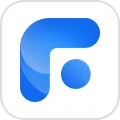How to Change the Default Calendar on Your iPhone
Unlock personalization on your iPhone with our detailed guide on changing the default calendar settings, streamlining your schedule management for enhanced efficiency.
In the realm of digital organization, calendars play a pivotal role in helping us manage our time, appointments, and events. While the default calendar on the iPhone is a robust tool, users often have their preferred calendar apps for various reasons.
In this comprehensive guide, we will explore the significance of changing the default calendar on your iPhone, the impact on productivity and organization, and provide step-by-step instructions on how to seamlessly switch to your preferred calendar app for a more tailored and efficient scheduling experience.
The Importance of Customizing Calendar Apps
The default Calendar app on the iPhone is a feature-rich tool that syncs seamlessly with iCloud, providing users with a unified view of their schedules. However, users may opt to change the default calendar for several reasons:
1. Preference for Third-Party Apps: Users often have their preferred third-party calendar apps that offer additional features, a more intuitive interface, or integrations with other productivity tools.
2. Cross-Platform Synchronization: Some users prefer calendar apps that offer seamless synchronization across multiple platforms, allowing them to access and update their schedules from various devices.
3. Specialized Features: Third-party calendar apps may offer specialized features such as advanced event customization, collaborative scheduling, or integration with task management tools.
4. Aesthetic Preferences: Users may opt for a calendar app that aligns with their aesthetic preferences, providing a visually pleasing and personalized scheduling experience.
5. Integration with Work Tools: For professional users, choosing a calendar app that integrates seamlessly with work-related tools and applications is crucial for maintaining a streamlined workflow.
The Impact of Customizing the Default Calendar on Productivity
The choice of the default calendar app can significantly impact productivity, organization, and the overall user experience. Here are key considerations:
1. Efficient Scheduling: A preferred calendar app with a user-friendly interface and intuitive features can streamline the scheduling process, saving time and reducing the risk of scheduling errors.
2. Enhanced Visibility: Users may opt for calendar apps that provide enhanced visibility, offering features such as color-coded events, week view, or customizable layouts for a more comprehensive overview of their schedules.
3. Collaborative Features: Calendar apps with collaborative features enable users to share schedules, coordinate events, and enhance communication within teams or among family members.
4. Seamless Integration: Integrating the default calendar with other productivity tools, email clients, or task management apps contributes to a more connected and efficient digital ecosystem.
5. Personalized Notifications: Preferred calendar apps may offer more customizable notification settings, ensuring that users receive timely reminders tailored to their preferences.
Step-by-Step Guide to Change the Default Calendar on iPhone
1. Access Settings: Open the "Settings" app on your iPhone.
2. Scroll Down and Tap on "Mail": In the Settings menu, scroll down and tap on "Mail."
3. Choose "Default Calendar": Within the Mail settings, find and tap on "Default Calendar." This option allows you to select the calendar that will be used as the default for new events and invitations.
4. Select Your Preferred Calendar: A list of available calendars will appear. Choose your preferred calendar app from the list. If you have multiple third-party calendar apps installed, they should appear as options.
5. Verify Changes: To ensure that the changes have been applied, create a test event or appointment using the Calendar app. Verify that the event is added to your preferred calendar.
Additional Tips for Optimizing Calendar Customization
1. Sync Across Devices: Ensure that your preferred calendar app syncs seamlessly across all your devices for a consistent and up-to-date schedule.
2. Explore Widget Options: Take advantage of calendar widgets on the iPhone home screen to get a quick overview of upcoming events and appointments.
3. Utilize Advanced Features: Familiarize yourself with advanced features offered by your preferred calendar app, such as location-based reminders, travel time estimates, or event attachments.
4. Regularly Review and Update: As your scheduling needs and preferences evolve, regularly review and update your calendar app settings for optimal customization.
Examples of Preferred Calendar Apps
1. Google Calendar: Known for its clean interface and seamless integration with other Google services, Google Calendar is a popular choice for users who rely on Gmail and other Google tools.
2. Fantastical: Fantastical is praised for its natural language processing, allowing users to input events in a conversational manner. It offers a visually appealing design and powerful features.
3. Microsoft Outlook: For users invested in the Microsoft ecosystem, Outlook provides a comprehensive solution with email, calendar, and task management features in one app.
4. Apple Calendar: While the default calendar, Apple Calendar, is robust, some users prefer its simplicity and tight integration with the iOS ecosystem.
5. Any.do: Any.do is a task management and calendar app that combines scheduling, reminders, and to-do lists, offering a holistic approach to productivity.
Conclusion
Customizing the default calendar on your iPhone is a strategic move towards enhancing your productivity and tailoring your digital experience. As our schedules become increasingly complex, the choice of a calendar app that aligns with your preferences, features, and workflow is paramount. By following the step-by-step guide, understanding the impact of customization on productivity, and exploring additional tips, users can seamlessly integrate their preferred calendar app into their daily routines. Embrace the power of customization and master your time with a calendar app that not only meets your scheduling needs but enhances your overall organizational efficiency.
FoneTool - All-in-one iPhone Data Manager
Transfer, backup and manage data on iPhone, iPad and iPod touch in an easy way.
-
 iOS 26 Compatible
iOS 26 Compatible
 iPhone 16 Supported
iPhone 16 Supported
Windows 11/10/8/8.1/7
100% Secure

